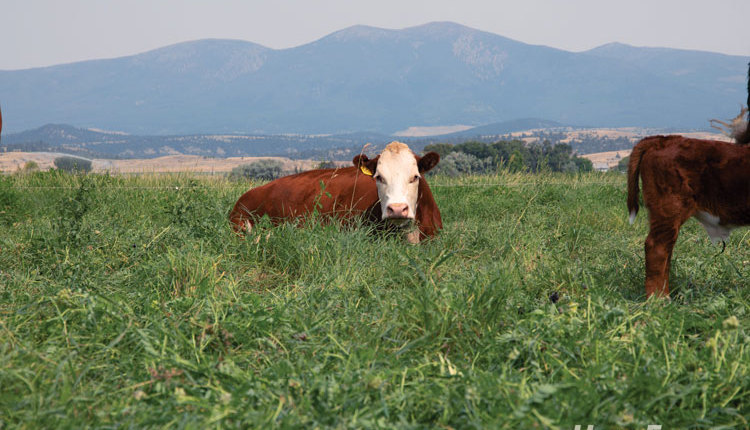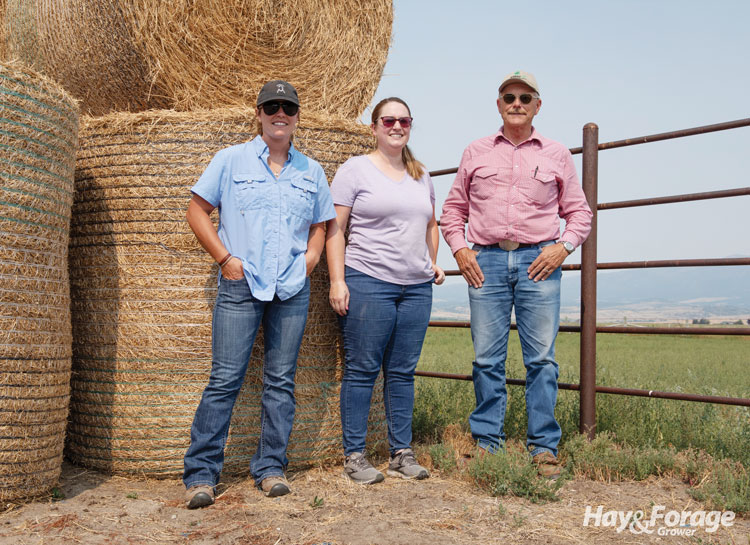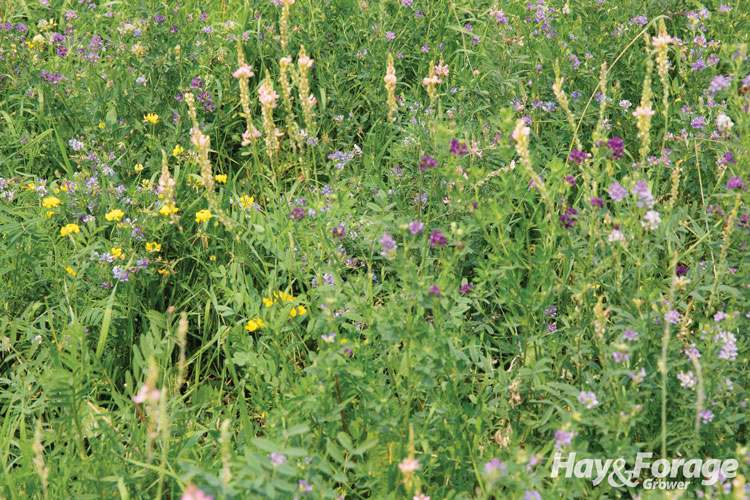
“Where do you want to meet?” I texted Mark from the seat of my rental vehicle, which sat in a Townsend, Mont., gas station parking lot.
The reply came back, “75 Lower Dry Gulch Road.”
I couldn’t help but wonder if the farm was slightly moister than those on Upper Dry Gulch Road, if there was such a location. There isn’t, but there is the less descriptive Dry Gulch Road nearby.
After setting my destination in Google Maps, I headed for my rendezvous with Mark Ehlke and his two married daughters, Lacey Jepson and Janea Merkel. Together, with Mark’s wife, Della, they own and operate Ehlke Herefords outside of Townsend, which is in an area along the Missouri River once passed through by Lewis and Clark — without the aid of Google Maps.
Mark is a first-generation seedstock producer who always had the desire to raise Hereford cattle. He and his wife bought their first registered Herefords in 1993, soon after being married. These days, about 300 brood cows along with heifers and bulls are grazed on the ranch.
Ehlke Herefords consists of 700 acres of owned dryland, 400 acres of leased dryland, and 450 pivot-irrigated acres. “The leased dryland acres belong to the U.S. Fish and Wildlife Service, so certain rules need to be followed such as leaving grain for wildlife, no grazing, and cutting hay at a certain time,” Lacey noted. The ranch harvests about 500 acres of hay that is mostly an alfalfa-grass mixture, but they also harvest some triticale and sainfoin hay. Triticale is used as a rotation crop where needed.
Diverse pastures
Nearly all of the operation’s irrigated pastures are located on the home ranch, where Janea and her family live, or on another nearby purchased ranch, home to Lacey and her husband, that is also irrigated. These pastures are intensively grazed throughout the growing season.
“We reseeded most of the irrigated pastures about six or seven years ago, and now we just interseed as needed to keep the legume component strong,” Lacey said. “We were one of the first in this valley to rotational graze, but we’re starting to see a few more now. Although it depends on the size of the group, cattle are moved almost every day. Permanent, high-tensile wire has been installed around the pivot perimeters, then polywire on reels is used within the pivots to set paddock size based on animal numbers and grass growth. Our portable water tanks and minerals are moved with the cows,” she added.

The ranch’s irrigated pastures are loaded with legumes. On the leased ranch, sainfoin, cicer milkvetch, and birdsfoot trefoil are matched with orchardgrass and smooth bromegrass. On the home farm, the pastures are primarily orchardgrass, some alfalfa, and interseeded red clover.
“Much of our upper dryland grazing is in the mountain foothills, about 10 miles away,” Lacey said. “Those pastures get grazed first thing in the spring. Once things begin to dry out, then the fall-calving cattle are moved to the irrigated pastures closer to home and rotated more vigorously.”
Mark noted that putting the fall-calving herd on larger, dryland pastures offers them more exercise in the spring and keeps them from getting over conditioned before they start calving. We’re in the process of improving the dryland pastures with intermediate wheatgrass, sainfoin, and milkvetch,” he added.
In addition to the cow-calf herd, bulls and heifers are also grown out on grass. The farm sells seedstock by private treaty and through their own production sales. During some years, steers are kept back to graze. “I wish we would have done more of that this year given the market prices,” Mark chuckled.

Unique fall-calving herd
Of Ehlke Herefords’ cow herd, about 260 calve in the fall and 40 in the spring. The latter group is mostly first-calf heifers or embryo transfer cows.
“Fall calving is unique in this area,” Lacey said. “Most have spring-calving herds. We calve from mid-August through early October. The calves do really well, and we can sell 18-month-old bulls, which our customers like.”
Mark added, “The downside is that you have to keep them on good-quality hay throughout the winter. We find that the overall health of the calves is better in the fall group. Our bull calves typically wean at 600 pounds.”
During the Montana winters, animals remain on pasture, mostly pivot corners to minimize grass kill. Portable windbreaks, which Mark makes himself, are put up and straw bedding is put down to keep cows comfortable. Baled hay is fed as winter forage.
“Our winter cold snaps are brief — a week or 10 days — then we’ll get a warm up and melt the snow,” Mark noted of a typical winter. “This past winter was unordinary, we got our first snow during the end of October, and it stayed all winter.”
Good pastures, good cows, and two daughters who look to carry on the legacy that their parents were able to build have Ehlke Herefords set up for a bright future under the big skies of Montana. Learn more about the ranch at ehlkeherefords.com or visit their Facebook page at facebook.com/ehlkeherefords. •
This article appeared in the January 2024 issue of Hay & Forage Grower on pages 22-23.
Not a subscriber? Click to get the print magazine.

